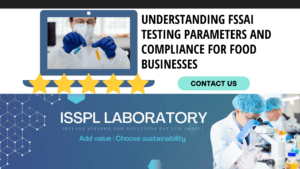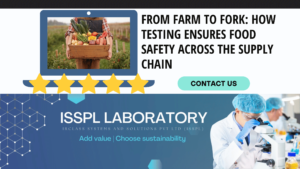An Overview by Team ISSPL - Analytical Testing Laboratory in India
ToggleToday customers demand jams, juices, and concentrates that they consume or make to be tasty-healthier than sugar cubes & safe as well. Manufacturers heavily vet their food to ensure that it is free from contaminants, contains accurate nutritional information, and lives up to the consumer’s expectations for quality.
For the sake of safety and health, be sure to test your products because they can moderate all potential health risks & bring transparency between what you produce and what people eat. In this piece, I will discuss how testing ensures step sweet jams, juices, and concentrates deliver on these key aspects of quality.
1. Check The Nutrients In It
Constantly consumers look at jam, juice, and concentrate from the perspective of healthfulness. For instance, people usually go for juices because they are high in vitamins and antioxidants, or jams as these contain a great amount of fruit. That testing is to make sure these products are what they say from a nutrition perspective. Nutritional testing verifies the quantity of vitamins, minerals, and natural sugars as claimed in orange juice or real fruit jams.
2. Identification of harmful contaminations
Jams, juices, concentrates One major use of testing jams, juices, and concentrates is to identify contaminants that could be harmful to human health. The source of contaminants — may be in the raw material, environment, or manufacturing process Fruit-based products may contain heavy metals including lead and arsenic, pesticides, and other chemicals that can be harmful if ingested.
3. Microbiological Safety
Jams, juices, and concentrates must be free of pathogenic bacteria, yeasts, and molds; therefore they require microbiological testing. It can be the cause of foodborne illnesses, spoilage, and unwanted flavors. Conserve is delicious as the taste last longer and it can be safely stored for up to several years but in case of a jam or juice, it tends to ferment if not sterilized correctly or may lead to contamination.
4. Keeping the pH Levels Just Right
The pH of jams, juices, and concentrates is important to their stability as well as flavor. Optimal pH balance helps prevent the development of dangerous microbes, securing and expanding the shelf life of a product. For instance, juices with a pH level of either 4.6 or that is too low become susceptible to bacteria. The pH test of these food products is essential to make sure that they fall within the safe scale which will prevent them from getting infected by various types of pathogens
5. Allergen Testing
Consumers, particularly those with allergens sensitivities surrounding products like nuts, soy, and gluten. For some people, even the smallest amounts of these allergens can lead to dramatic reactions. hypo-allergenic testing to ensure accurate labeling with no hidden extras It protects those who consume allergen-friendly products and limits the potential of an allergic reaction due to cross-contamination during production.
6. Look For Added Ingredients and Preservatives
A lot of jams, juices, or concentrates that we buy from stores contain preservatives and additives to extend their shelf life, make them taste sweeter, or keep their natural color. Although these additives are usually safe when consumed in moderation, testing ensures these levels are within acceptable limits and do not pose any health risks. This tests to ensure that these additives are at safe levels and do not affect the quality and safety of the product.
7. Quality Freshness Assurance
In the case of jams, juices, and concentrates testing is required to confirm their freshness and quality as well. Consumers want these products to taste fresh, have the right texture, and retain their flavor through time/space. Testing reveals spoilage, fermentation, or off-flavors indicative of a lack of quality. So you can trust that the tasty goodness you love to eat is also tasty and good for your dog too.
8. Quality And Authenticity Of The Label
In addition to accurate nutritional and contaminant testing, it also is important that the product labels include a correct representation of what the contents truly are. Mislabeling Is Dangerouscitation For instance, a juice that says “100% fruit” on the label should not have any additional sugars or no artificials. Testing ensures that the product matches its label claims, helping to prevent consumers from being deceived by false / intended-to-deceive advertisements or ingredient list errors.
9. Consumer Trust and Brand Integrity
Finally, complete testing of jams and juices or concentrates can develop faith in consumers for the brand. Consumers trust things that have undergone rigorous testing and are known to be some of the most important safety components. Without this trust, you cannot have loyal customers and without loyal customers, you do not have a market. When products are safe, nutritious, and accurately labeled, companies do right by the consumer.
Conclusion
To sum up, it is necessary to test jams, juices and concentrates for them to be safe for general consumption as well as remain nutritious and high quality. Whether checking for dangerous impurities, verifying accurate labeling, or testing to keep food fresh, the role of testing is essential in bringing safe and healthy products to market.
Through these rigorous checks, we can build trust in companies and ensure that their products not only adhere to but exceed the standards of the industry. Important testing services are provided by labs like ISSPL Lab which ensure that the jams, juices, and concentrates are safe, nutritious & in compliance with standards and regulations set globally for people to eat.







